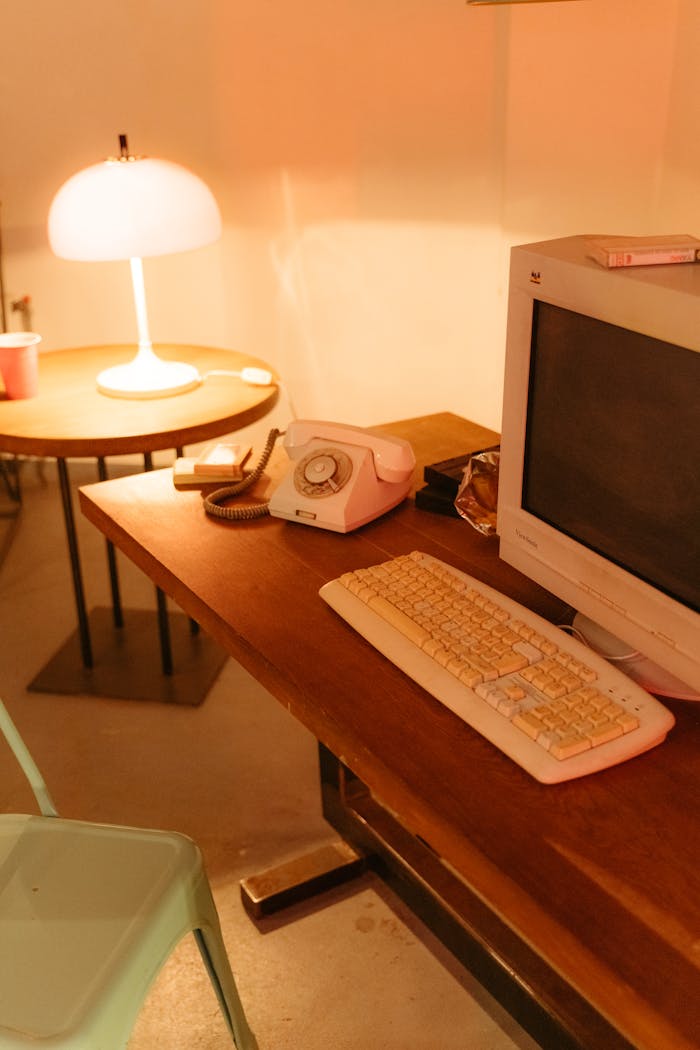In our hyper-connected world, I’ve noticed a surprising trend: the resurgence of analog tools. Despite the constant barrage of digital innovations, many people are turning to old-school methods like paper planners, notebooks, and physical books. It’s a fascinating shift that’s caught my attention as a tech enthusiast.
This return to analog isn’t about rejecting technology. Instead, it’s a response to digital overload. As we spend more time glued to screens, there’s a growing appreciation for the tactile experience and focused attention that analog tools provide. I’ll explore why these seemingly outdated tools are making a comeback and how they’re helping people find balance in an increasingly digital landscape.
The Rise of Digital Overload
The digital age has brought unprecedented access to information and connectivity, but it’s also introduced new challenges. As we navigate this digital landscape, many of us are experiencing the side effects of constant connectivity and information saturation.
Information Overload and Its Effects
Information overload occurs when we’re exposed to more data than we can effectively process. On average, people consume 34 gigabytes of information daily, equivalent to 100,000 words. This constant influx of data leads to:
- Decreased productivity: 43% of workers report difficulty concentrating due to digital distractions
- Impaired decision-making: Excess information reduces our ability to make timely, effective choices
- Stress and anxiety: 55% of adults feel overwhelmed by the amount of information they encounter daily
The effects of information overload extend beyond our work lives, impacting our mental health and personal relationships. Many individuals report feeling a constant need to stay connected, leading to a fear of missing out (FOMO) and increased stress levels.
Screen Fatigue and Digital Burnout
Prolonged exposure to digital devices takes a toll on our physical and mental well-being. Screen fatigue, also known as digital eye strain, affects 65% of Americans who spend 3+ hours daily on digital devices. Symptoms include (https://pmc.ncbi.nlm.nih.gov/articles/PMC9434525/):
| Symptom | Percentage of sufferers |
|---|---|
| Eye strain | 32.4% |
| Headaches | 27.7% |
| Blurred vision | 27.9% |
| Neck and shoulder pain | 35.1% |
Digital burnout, a state of mental exhaustion caused by excessive digital engagement, is becoming increasingly prevalent. A survey of 2,000 employees found that:
- 68% feel more burned out while working from home
- 40% experience mental exhaustion from video calls
- 59% feel less connected to their colleagues in a digital environment
These factors contribute to a growing desire for analog alternatives, as people seek respite from the constant digital stimulation and a return to more tactile, focused experiences.
The Resurgence of Analog Tools
Analog tools are experiencing a remarkable comeback in today’s digital-centric world. This revival isn’t a rejection of technology but a strategic response to the overwhelming digital landscape.
The Tactile Appeal of Physical Objects
The tactile experience of analog tools offers a unique sensory engagement that digital devices can’t replicate. Physical notebooks, pens, and paper planners provide a tangible connection to our thoughts and tasks. This hands-on interaction activates different parts of our brain, enhancing memory retention and creative thinking. The act of writing by hand slows down our thought process, allowing for deeper reflection and more meaningful connections between ideas.
Analog tools also offer a distraction-free environment, free from notifications and pop-ups that often interrupt digital workflows. This focused attention leads to improved concentration and productivity. The physicality of these tools creates a sense of permanence and commitment, making tasks and goals feel more concrete and achievable.
Nostalgia and Authenticity
The resurgence of analog tools taps into a collective yearning for authenticity and simplicity. Vinyl records, film cameras, and handwritten letters evoke a sense of nostalgia, connecting us to a pre-digital era. This emotional resonance provides a comforting counterbalance to the fast-paced, ever-changing digital world.
Analog tools offer a unique aesthetic and personal touch that digital alternatives often lack. The imperfections and individuality of handwriting, the warmth of vinyl sound, or the grain of film photography create a more intimate and authentic experience. This authenticity extends to the process of creation itself, with many people finding joy and fulfillment in the craft of using analog tools.
The limited nature of analog tools also contributes to their appeal. Unlike the infinite storage of digital devices, physical notebooks and photo albums have finite space. This constraint encourages thoughtful curation and intentionality, leading to more meaningful collections and reflections.
Benefits of Analog Tools in a Digital World
Analog tools offer unique advantages in our increasingly digital world. They provide a refreshing alternative to screens and digital devices, helping users regain focus and tap into their creative potential.
Improved Focus and Productivity
Analog tools eliminate digital distractions, enhancing concentration. Paper planners and notebooks don’t ping with notifications or tempt users with social media apps. This distraction-free environment allows for deeper focus on tasks at hand. Studies show that writing by hand activates more areas of the brain than typing, leading to improved information processing and retention. The physical act of crossing off completed tasks on a to-do list provides a tangible sense of accomplishment, boosting motivation and productivity.
Enhanced Creativity and Memory Retention
Analog tools stimulate creativity and improve memory retention in ways digital devices can’t match. Sketching ideas in a notebook or on a whiteboard encourages free-flowing thoughts and visual thinking. The tactile experience of writing or drawing by hand engages multiple senses, strengthening neural connections and enhancing recall. Research indicates that students who take handwritten notes outperform those who type notes on laptops in terms of conceptual understanding and long-term retention. Analog tools also allow for easy mind-mapping and non-linear thinking, fostering innovative problem-solving approaches.
Popular Analog Tools Making a Comeback
As digital overload intensifies, several analog tools are experiencing a resurgence in popularity. These tools offer a refreshing break from screens and provide unique benefits that digital alternatives struggle to match.
Paper Planners and Notebooks
Paper planners and notebooks are leading the analog renaissance. Bullet journals, in particular, have gained a massive following, with millions of enthusiasts worldwide. These customizable planners allow users to create personalized layouts for tracking tasks, goals, and habits. High-quality notebook brands like Moleskine and Leuchtturm1917 have seen significant sales growth, catering to professionals, students, and creatives alike. The tactile experience of writing on paper enhances memory retention and promotes deeper engagement with tasks and ideas.
Vinyl Records and Analog Audio
Vinyl records have made an unexpected comeback, with sales reaching their highest levels since the 1980s. In 2020, vinyl outsold CDs for the first time in 34 years. This resurgence is driven by audiophiles seeking a warmer, more authentic sound quality and music enthusiasts who appreciate the tangible nature of physical albums. Turntable manufacturers like Audio-Technica and Pro-Ject have expanded their product lines to meet growing demand. Additionally, analog synthesizers and tape recorders are gaining popularity among musicians and producers, offering unique sonic characteristics that digital emulations can’t fully replicate.
Balancing Analog and Digital: The Best of Both Worlds
Finding equilibrium between analog and digital tools optimizes productivity and well-being. This balance leverages the strengths of both approaches, creating a synergy that enhances our daily lives.
Hybrid Approaches to Work and Leisure
Hybrid approaches combine analog and digital methods to maximize efficiency and enjoyment. I’ve found that using a paper planner for daily tasks alongside digital calendar apps for long-term scheduling creates a powerful system. This combination allows for tactile engagement with immediate priorities while maintaining the convenience of digital reminders for future events. In leisure activities, I’ve observed a growing trend of people reading physical books at home but using e-readers for travel, capitalizing on the benefits of both formats.
Digital Tools That Complement Analog Methods
Innovative digital tools now enhance rather than replace analog experiences. For example, smart pens digitize handwritten notes, preserving the cognitive benefits of writing by hand while enabling easy digital storage and sharing. Apps like Rocketbook and Evernote seamlessly integrate with traditional notebooks, allowing users to scan and organize handwritten content digitally. In the realm of creativity, digital drawing tablets with paper-like surfaces offer artists the tactile feel of traditional media with the versatility of digital manipulation.
The Future of Analog in a Digital Age
As digital technology evolves, analog tools are adapting to remain relevant and valuable. I’ve observed a growing trend of innovative analog products that blend traditional appeal with modern functionality, ensuring their place in our increasingly digital world.
Innovations in Analog Technology
Analog technology isn’t standing still. I’ve seen remarkable advancements that enhance the analog experience while maintaining its core benefits. Smart pens, like the Livescribe Echo or Moleskine Pen+, digitize handwritten notes in real-time, allowing users to enjoy the tactile sensation of writing while creating searchable digital copies. Rocketbook’s reusable notebooks offer a similar hybrid approach, combining the feel of traditional paper with the ability to digitize and store notes in the cloud.
In the audio realm, high-end turntables now incorporate Bluetooth connectivity, enabling vinyl enthusiasts to wirelessly stream their records to modern speakers. Companies like Crosley and Audio-Technica are leading this charge, bridging the gap between analog sound quality and digital convenience.
Sustainable and Eco-Friendly Analog Options
Sustainability is a key factor shaping the future of analog tools. I’ve noticed a significant shift towards eco-friendly materials and production methods. Brands like Karst Stone Paper produce notebooks using recycled construction waste, creating a smooth writing surface without using trees. Refillable pen systems, such as those offered by Lamy and Kaweco, reduce plastic waste by allowing users to replace only the ink cartridge.
In the realm of analog photography, companies like Lomography are reviving film cameras with sustainable twists. Their Lomo’Instant Square Glass camera uses eco-friendly packaging and promotes the use of rechargeable batteries, appealing to environmentally conscious consumers who appreciate the unique aesthetic of instant film.
These innovations in sustainability not only reduce the environmental impact of analog tools but also align with the values of many consumers who are seeking more responsible consumption habits.
Conclusion
The resurgence of analog tools in our digital age isn’t just a passing trend; it’s a response to our deepening need for balance and connection. As we navigate the complexities of modern life these tactile solutions offer a welcome respite from digital overwhelm. They provide us with tangible ways to engage with our thoughts improve our focus and tap into our creativity.
By embracing both analog and digital tools we can create a harmonious blend that enhances our productivity and well-being. This balanced approach allows us to harness the best of both worlds adapting to our ever-changing needs. As we move forward it’s clear that analog tools will continue to evolve playing a vital role in our increasingly digital lives.



